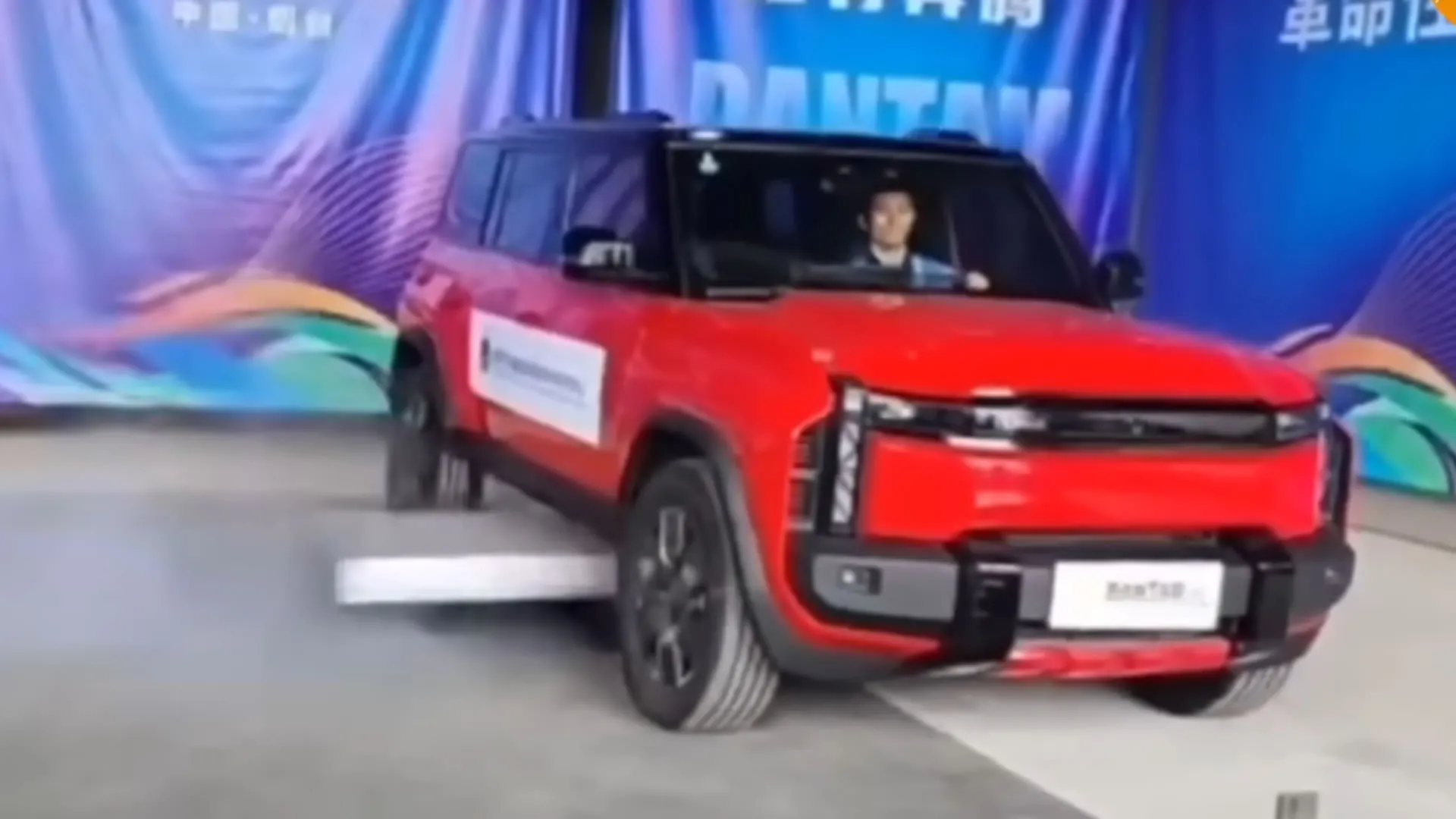
A demonstration video from China has been released that showcases a novel EV battery fire-safety system. According to reports, the system can detect thermal runaway (when one battery cell ignites and the fire spreads rapidly), and it ejects the entire battery pack out of the vehicle.
In its current iteration, the battery pack is blasted 10 feet (3 meters) to 20 feet (6 meters) away from the car in under a second. The video footage shows the ejection process working a bit like a giant toast popping out of a toaster.
At present, electric vehicle (EV) battery fires are rare but extremely hard to extinguish (they can burn even underwater at 1,800°F or around 1,000°C). Current firefighting practice in some places is to dunk the entire EV in a huge water tank. To this end, the ejection system will help get the burning pack away from passengers.
Jettison the core
In the video, reportedly organized by the China Automotive Collision Repair & Technology Research Center, a modified SUV (an iCar 03T or similar) can be seen on stage with a human operator in the driving seat. Seconds later, a large “bang” can be heard as the battery is ejected sideways from underneath the car into a padded area on the stage to catch the battery pack.
Such a system would give firefighters just the battery to deal with, not a whole car. At present, firefighters struggle to handle EV battery fires, and they are sometimes required to submerge the vehicle in a huge water tank to put fires out in the worst cases.
As interesting as the proposal is, it does introduce some other new potential hazards, too.
Primarily, the fact that ejecting a smoldering, 500+ lb (227 kg) battery pack through the air would be inherently dangerous to pedestrians, other cars, buildings, or roadside objects.
It would also introduce new liability concerns, which is why carmakers and suppliers quickly distanced themselves, as nobody wants to be tied to tech that could cause lawsuits.
That said, the proposal is still very much in its infancy. At this stage, it’s basically a proof-of-concept stunt, not something regulators would approve for roads.
Mixed reception from the media
Upon the proposal’s release, Western media outlets have offered a mixed reception, viewing it as a blend of serious engineering and unconventional design. InsideEVs, for example, remains cautious, saying it’s “odd, but not totally crazy” and could evolve if sensors/AI direct the ejection safely.
Other sources, like Futurism, have adopted a more skeptical tone, coining phrases like “liability with wings” and drawing comparisons to “photon torpedoes.” Companies like Joyson Electronics and iCar denied involvement, even though they were mentioned in reports.
Looking at the bigger picture, proposals like this battery ejection system show how desperate engineers are to solve the EV fire problem, even though EV fires are rare but catastrophic.
Standard fixes (better cooling, safer chemistries, fire-retardant packs) are being worked on worldwide. China’s demo is an extreme, early-stage concept and is unlikely to be adopted as-is, but it pushes the conversation on alternative safety measures.



